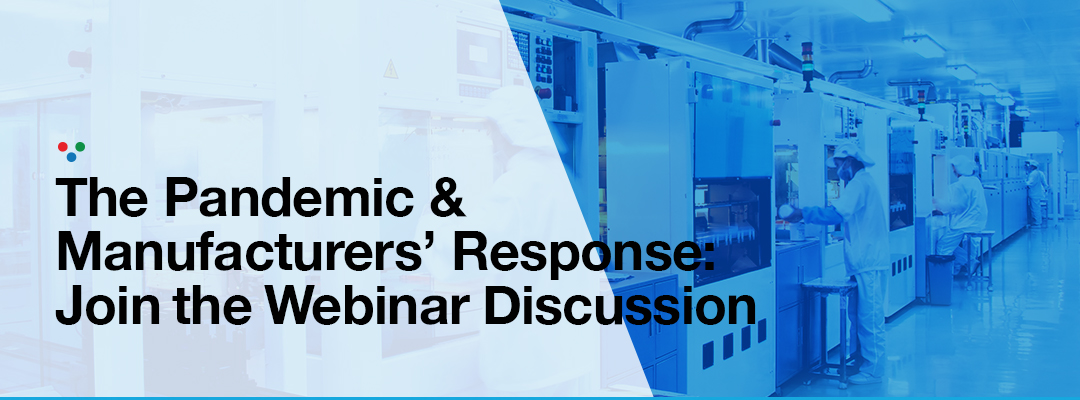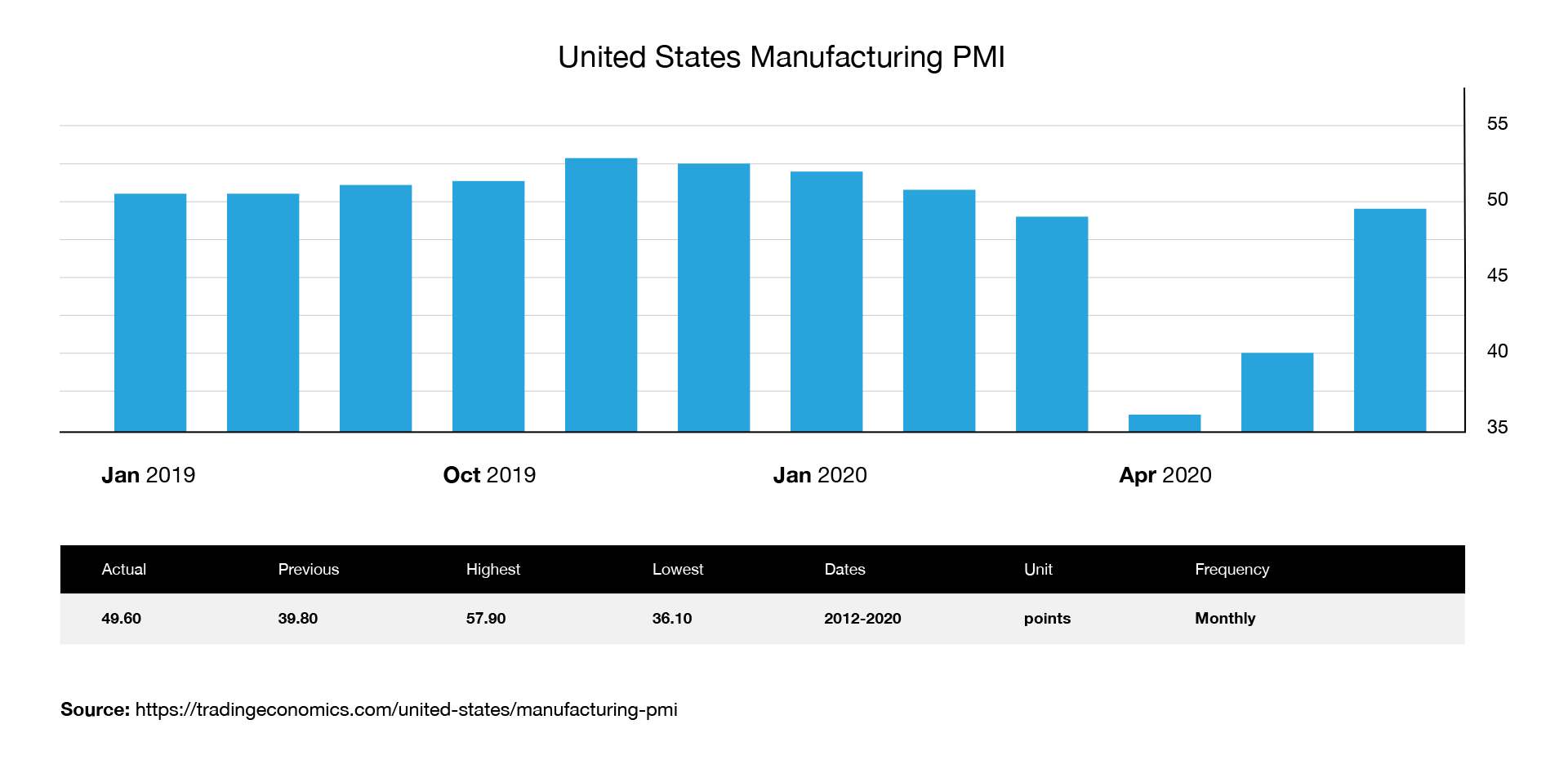
State of Manufacturing:
Expert Panel on COVID Response for OEMs
COVID has been a wake-up call in just about every aspect of manufacturing, forcing OEMs around the globe to become more agile and resilient.
We’re nowhere near the end of this pandemic, with infection rates in the U.S. moving fast in the wrong direction as we speak. What have we learned over the last few months? And more importantly, how can we become as nimble and responsive as possible during these uncertain times?
To help OEMs navigate through the uncertainty, VCC recently took part in a panel discussion, “State of Manufacturing: CEO Insights,” presented by Oden Technologies.
Panelists include:

Andrew Zanelli
President, VCC

Robert Harling
CEO, Gatekeeper Systems

Shirish Pareek
Managing Director, AMG Partners

Willem Sunblad
Founder and CEO, Oden Technologies, Ltd.
No matter your industry, COVID is impacting your world — and supply chain.
Here are a few key takeaways from the panel discussion to use in revamping your operations for what’s happening right now and what lies ahead:
Changes in Demand Require Swift Response
The U.S. Markit Manufacturing Purchasing Managers’ Index (PMI) is a measure of economic trends in manufacturing based on a monthly survey of supply chain managers across 19 industries. If we look at the activity since the pandemic began, you can see that production goes from nearly nothing in April to almost full capacity in June.
Almost all manufacturers — a whopping 96% — reported sharp swings in demand.
In VCC’s experience, we have seen a steady, high demand for components in essential businesses like food and medical companies.
Some OEMs used that downtime to step up to help combat COVID-19. We’ve all heard stories of hero companies who changed their core products, such as:
- Clothing companies producing masks and gowns
- Distilleries making hand sanitizer
- Building suppliers cranking out face shields
None of that would’ve been possible without creativity and resilience.
Whether your organization is trying to reduce the spread of coronavirus or simply keep your head above water, your operation needs the agility to accommodate the impending roller coaster.
Oden Technologies is on a mission to help you do just that through a panel discussion with industry experts in U.S. manufacturing. Watch the recorded webinar to hear perspectives strategies on how they shifted to accommodate shifts in demand (and you can, too).
The Future of Manufacturing: No Room for Fragile, Fragmented Supply Chains
Many companies were in worse shape than they thought when the pandemic hit their indirect suppliers of core components. These weaknesses were more than enough motivation for OEMs to rethink who they rely on for mission-critical parts.
As OEMs look to reconfigure their processes and partners, they need to think beyond cost, quality and delivery to ensure their supply chain includes:
- Solid infrastructure – both physical and informational structures should be solid to avoid a breakdown in production.
- 24/7 visibility – transparency into costs, as well as where your products are at that very second need to happen in real-time.
- Traceability – receiving different components from various vendors doesn’t have to be a fragmented process. Use traceability to see where and how your final products come together — then mitigate any hidden vulnerabilities.
- Agility – how can you seamlessly move products and change key suppliers proactively or reactively to maintain production? Agility is what will create continuity during natural disasters and other crises.
Focus on Productivity and Resilient Operations Are Essential
No company can afford to come to a complete standstill the way some did during the first wave of the pandemic.
While efficiency used to rule the day, in the post-COVID world, manufacturers should focus more on security and control.
Now, more companies are ready to pack up their China operations and reshore to North America. Why? Let’s be real, doing business on the other side of the globe is risky and inconvenient. Plus, there’s more that goes into the cost of doing business than cheap labor. From trade wars and tariffs to political tensions and quarantine shutdowns, the risks outside of production can really add up to an unsteady, unreliable supply chain.

In VCC’s case, we saw the value of nearshore manufacturing early on, and invested in our own SMT production line in 2019. From there, we kept investing in technology and better training for employees that enabled them to operate multiple processes for maximum efficiencies. With facilities only a short drive away from our offices, we can greatly accelerate every step of the design, development, and production process for our customers.
We’re on a quest to help other companies move production back to North America so they can take advantage of more proactive, resilient supply chains without sacrificing quality or cost benefits.
Of course, many OEMs will want to maintain Asia or overseas operations but include a second-tier supplier closer to home, and that’s perfectly fine. Our team can help secure that level of redundancy and security by sourcing alternates in North America for maximum agility.
Digital Transformation: Act Fast or Get Left Behind
Pre-pandemic, working from home was a pipe dream for many white-collar employees. Yet, when faced with the option to shut down or set up shop at home, companies and their teams have proven just how productive remote work can be. (So productive, it’s doubtful most companies will return to big offices with row after row of cubicles.) Not when the quality of work doesn’t suffer.
One small silver lining? The rise in remote work is that companies can now access a larger talent pool for pivotal roles than they may have before. This wider net of worker opportunities can be crucial in providing the creativity and skill to help co-author an organization’s digital transformation and post-COVID restructuring.
Of course, remote work isn’t feasible in the plant environment, but adding partitions, providing PPE, reconfiguring the floorplan to provide additional space, and alternating shifts are some of the ways VCC and other manufacturers are fighting back while delivering for their customers.
Smart plant technologies like just-in-time inventory management, robotics, and online employee training are crucial investments for luring manufacturing away from China and back to the U.S. However, China is already investing in these technologies, too. The race is on for making digital transformation happen that much faster. In the end, we’ll all work smarter and more efficiently as a result.
How can companies make strides in their digital transformation?
For starters, make sure all departments have a seat at the table, especially HR.
“Be thoughtful about who on your team is responsible for implementing new digital strategies, Not everyone on your leadership team is the right fit for moving your company to a new level — seek out leaders who are non-managers, consider hiring new blood to help you evolve.”
Andy Zanelli
President & CEO, VCC
We’re still in the thick of this crisis, and need to work together to come out the other side with as few scars as possible.
Hearing how a handful of experts are handling the current crisis is a great way to stay informed and move forward for the unknowns ahead.

